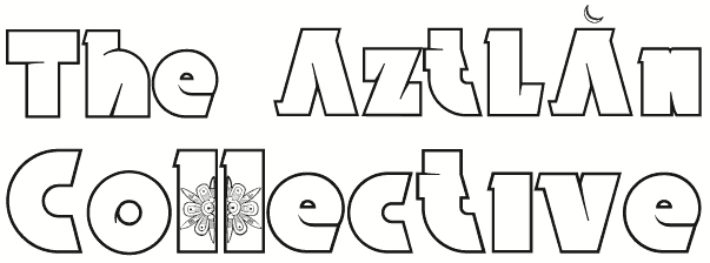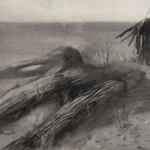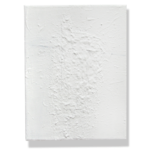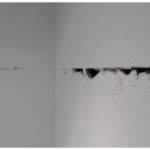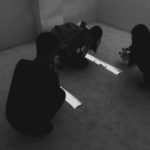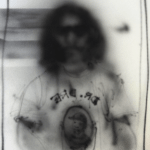J
on Gómez visited the California Insitute of the Arts, known as CalArts, as a high school senior and fell in love with drawing. Specifically, the work made in the classroom of E. Michael Mitchell–cover artist for J.D. Salinger’s Catcher in the Rye–who would soon become his mentor and close friend. Gómez was born with a natural talent for illustration; both his older brother and father could draw. He never felt like it set him apart in any way until he applied to the University of Southern California’s high school art program and earned a spot with only thirty of the 800 students that applied.
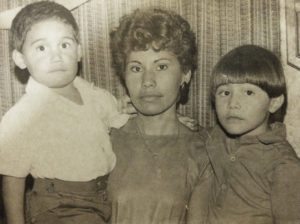
Although some of his earliest memories include he and his brother, Ruben, running barefoot in the dirt outside their multi-generational home in Mazatlan, Mexico, Gómez was born in California and returned to the neighborhood of Lincoln Heights just in time to begin primary school. Without knowing a word of English, Gómez began second grade in ESL courses and was not fluent until he was about 10. Today, he speaks without an accent, in fact, he rarely speaks Spanish at all, something he hopes to correct with residencies in Mexico. He explained, “as soon I spend more than two weeks there, I start to dream in Spanish again.” He recognizes the privilege that speaking without an accent has afforded him, but also mourns the erasure of his native tongue by the hand of humiliation in his youth.
Gómez went to high school 45 minutes from Lincoln Heights, in Valencia. He recalls, “As I got older I realized how different it was to be in the suburbs. I was looked at as this other thing, that didn’t really belong,” a sentiment that followed him to his old neighborhood, where he was now seen as “the rich kid.” Gómez made it work by joining sports: soccer, baseball, and basketball. Although he did not find it hard to assimilate, he was not able to stay engaged in any subject other than art. He barely qualified for graduation despite earning his high school’s first “career path in the arts” award.
Upon graduation, he attended Santa Monica Community college to build his portfolio for CalArts. He recalls the first time he met Mitchell, “Michael was in his 80s when I got there. He had an eye patch and looked like a wizard.” Gómez quickly fell in love with the program and Mitchell’s course which consisted of intensive life-drawing sessions lasting several hours at a time. His BFA from the celebrated animation program quickly landed Gómez a job as a development artist for filmmakers including the Hellraiser creator, Clive Barker and sci-fi writer, Ray Bradbury.
His one-year stint in movies prepared him to teach Character Animation at his alma mater, where he stayed for the next five years. In 2013, Gómez left his home in California for the big apple. The previous year the artist’s work appeared in an two-person exhibition at Nye + Brown Gallery in the CalArtisans presentation, Divine Gluttony. He remembers having to pass a hyperreal sculpture by Duane Hanson in the front gallery and feeling like he had finally made it.
New York had different plans for the artist, however. With no gallery prospects and the teaching requirements preventing him from working outside his alma mater, he hastily applied to graduate programs at Yale, Pratt, Columbia, and CalArts and endured a parade of rejection. He turned to introspection to mend his broken spirit. Realizing that his work was not where he wanted it conceptually, he began to search for what matters most, to him and universally. This search brought him back to the US immigration system.
The artist was 27 the first time he asked a close family member about her journey to the US. After the initial shock wore off, he recalls feeling a range of emotions beginning with heartbreak. “For one I had never inquired about it; two, there was nothing I could have done; and three, I felt selfish because she had to go through that to get to her family.” But then he felt angry and motivated to “make a difference, no matter how small… to understand why this is happening.”
Her children were only small when she arrived, cloaked in the dark of night. Gómez recalls her worn hands as he tries to recall the details of her journey. Even though much of his recent work deals with the desert, she had to crawl through a sewage tunnel to see her children again. If it wasn’t for a small boy extending his hand in her weakest hours, she might have turned back.
[The American Government is] always talking about the border, but they are not asking why do people want to come here? Why are they leaving their whole family, their culture, and their land behind? It doesn’t make sense.
The artist disengaged from his usual color palette and formal training inspired by Giacometti’s‘s elongated forms and Cy Twombly’s movement in the Poems to the Sea series. He explains that because of the texture, he “began to envision forms walking through the desert,” in work like El Viaje. “I took a piece of charcoal and dragged it across in a straight line. It was ephemeral the way the line soaked into the paint, almost disappearing under light…hot too, like that feeling you get when the sun is really bright and it takes a moment for your eyes to adjust.”
What emerged became his portfolio to the School of Visual Arts, where he is currently developing his thesis. The program has opened many previously unexplored doors, including collaborations with Arizona State University Art Museum and the Museum of Walking there in Tempe.
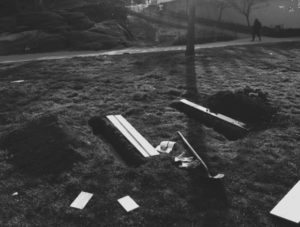 Last summer, Gómez constructed his first piece of public art for the Flux Art Fair. An impressive 9ft x 7ft x 2 ft concrete board and wood structure with plexiglass and solar-powered lights known as Passage: Monolith. Chosen for the theme Changing Landscapes, the interactive work pays homage to Harlem’s eclectic social landscape “evolved from Native Americans, to European settlers, Jews fleeing violent persecution, and former slaves escaping the Jim Crow South. The result is a melting pot of cultural richness carved from fierce oppression and galvanized by the strength of hope.” The website boasts, “Passage: Monolith is a monument to the character of the human spirit.”
Last summer, Gómez constructed his first piece of public art for the Flux Art Fair. An impressive 9ft x 7ft x 2 ft concrete board and wood structure with plexiglass and solar-powered lights known as Passage: Monolith. Chosen for the theme Changing Landscapes, the interactive work pays homage to Harlem’s eclectic social landscape “evolved from Native Americans, to European settlers, Jews fleeing violent persecution, and former slaves escaping the Jim Crow South. The result is a melting pot of cultural richness carved from fierce oppression and galvanized by the strength of hope.” The website boasts, “Passage: Monolith is a monument to the character of the human spirit.”

This work and others including Auto Body, Excavations, and Horizon, from 2016 and El Viaje from 2015 explore migration as a shared history, a binding thread. He plans to return to the Sonoran desert this March, and we plan to check back in with him then.
Jon Gómez met with Diana Ledesma at his studio on Thursday, January 5, 2017.
Further Reading:
About the author:
Diana Ledesma is an arts professional living in New York City. She obtained her masters from New York University in 2016, completing her thesis on the status of the Mexican American art market.
